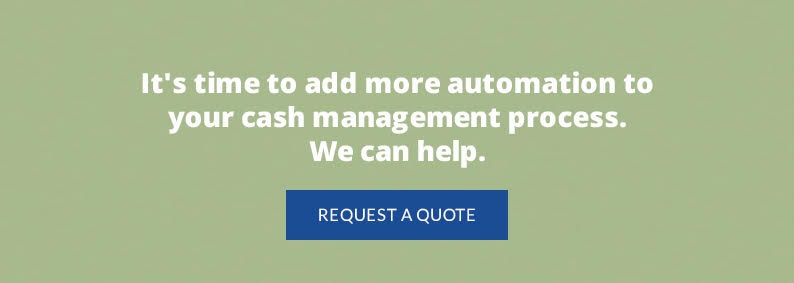Despite predictions to the contrary, it seems like cash is going to stick around for some time yet. That means the best thing any business owner can do is look to improve their policies and management strategies.
Working with cash, however, doesn’t mean sticking with old-fashioned management techniques. Today’s technology has come a long way. Building a better money management system for your business starts with embracing automation and updating your procedures.
This guide will help you build a better money management and automation strategy for your business.
Determine Your Needs
The first step in building a better automation strategy is to look at what your business needs. If you handle hundreds of thousands of dollars in cash, you’re probably going to want devices that can help you manage that volume. If most of your cash comes in as coin, then you should consider automating functions around sorting, counting, and rolling coins.
Examine where you need the most assistance. For many businesses, cash-handling tasks are focused on the back office or count room. Others may feel they require more help on the floor, opting for solutions that can be installed at the register level.
Consider specific challenges your business faces. Retail businesses might be concerned with the store float and keeping proper amounts of cash on hand. Other businesses could be more worried about creating better schedules for pick-ups and deposits, streamlining these tasks and the associated costs.
Almost every business will be concerned with visibility, security, and streamlining cash operations to some extent. You may want to prioritize specific goals over others.
Observe Your Employees
Before you settle on particular goals or decide to adopt a particular device, look at your current cash management procedures and determine how your employees conduct their cash-handling tasks.
This offers you the opportunity to both improve your processes and procedures, as well as to see which parts of those processes stand to benefit the most from automation.
An example might be cash sorting and counting. If your employees are still sorting bills by hand, adopting a cash sorter may be the first step in your automation plan.
Choose Your Automation Provider
The next step is to discover the devices and providers who can help you automate money management in your business. You’ll need to think about the devices you want to add to your management process, as well as other factors.
Those considerations include the lifecycle of the machine and how it will integrate with other systems you may be using. You might want to examine factors such as training, set-up, roll-out, and more.
At this stage, you may be most concerned about the machines you want to adopt. Be sure to also think about who is providing the device. While it might seem logical to work with the manufacturer, it could actually benefit you to work with a provider who can offer you access to a diversity of makes and models, as well as offer preventative maintenance and more.
Train and Prepare Your Staff
The next step in any automation strategy must be getting your team ready to be automated. Some people will eagerly embrace new technology, while others will be less enthusiastic.
Everyone must be shown how to use new devices and incorporate them into the money management process. Your provider can help you roll out and implement new devices by offering training and troubleshooting.
Plan Your Next Steps
Once you’ve introduced automation to your cash management process, make sure you’re maintaining the devices that support automation. This can include everything from preventative maintenance to an eventual replacement plan.
Your strategy should also include plans for continuing automation. A cash sorter or a smart safe may be the first step, but it’s just one of many on your way to a fully automated money management system.



